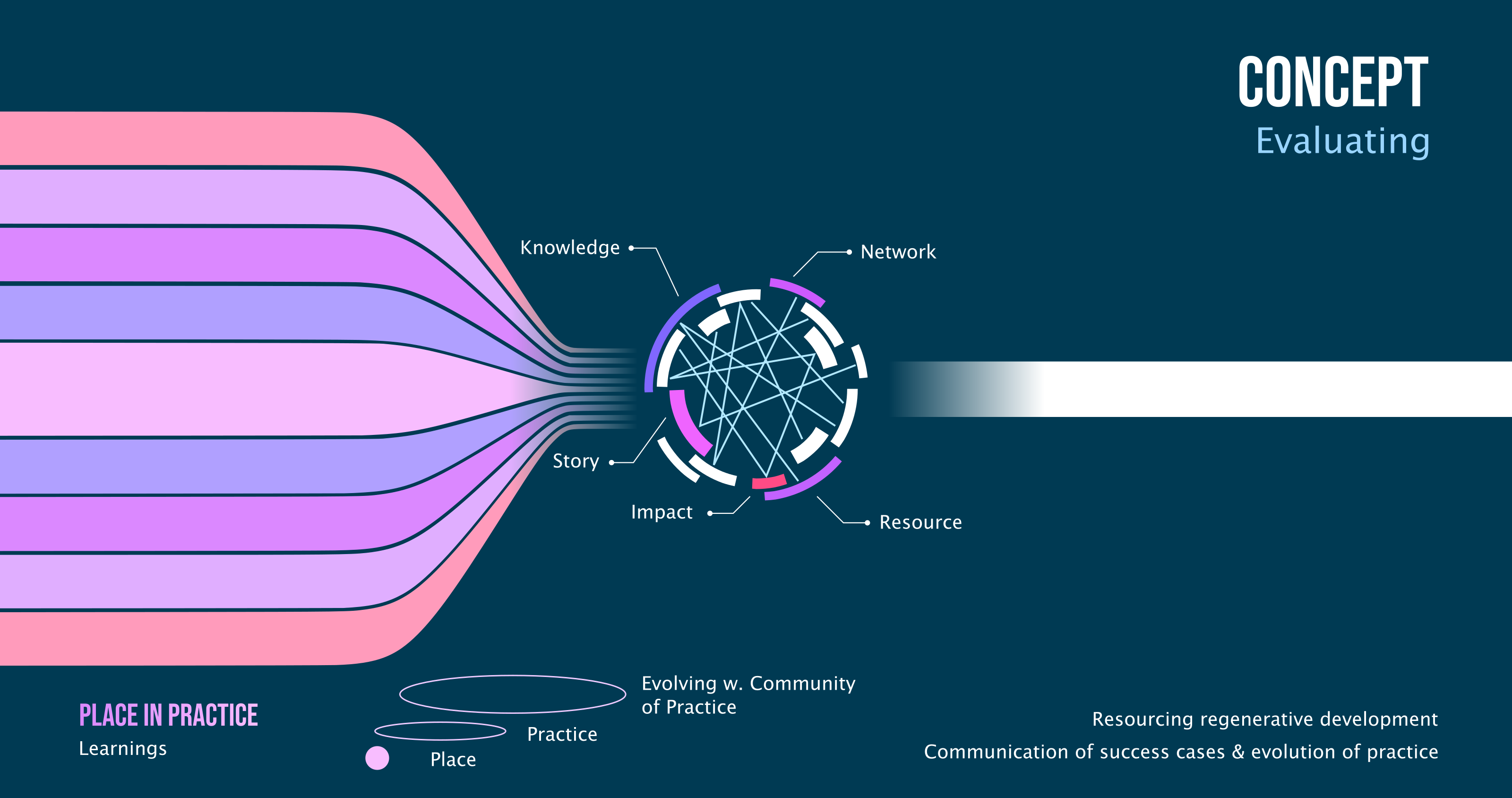
evaluation is the essence of governance.
evaluation, or the valuing of energy flows within a system, is how a collective learns about its attempts to self-organize towards a shared goal.
for any collective, its constituent social organisms and their individual human members, as well as the wider scales and higher orders of systems within which it is placed - evaluation is critical.
Regenerative systems need tools that capture non-linear, ecosystem-based impact metrics that go beyond conventional ROI. Building a proprietary “e-valuation” (energy in motion and ecosystem valuation) protocol will enable both funders and communities to utilize tangible progress indicators that reflect ecosystemic health, community engagement, and sustainable value creation.
For Prisma, the objective is to create an e-valuation protocol with metrics that track ecological, social, and economic flows over time. This could include tools for tracking energy exchanges, resource flows, and social value, as well as adaptations communities make as they learn. Real-time data feedback can enable project participants to adjust practices, strengthening long-term regenerative outcomes. Partnering with sensor tech, bioinformatics, or real-time analytics could also help capture subtle but crucial indicators, like soil health, water cycles, or social wellbeing.
Introduction:
E-valuation (energy flow valuation) is a participatory, multidimensional evaluation approach designed to help collectives and communities assess, adapt, and learn from their efforts to self-organize towards shared regenerative goals. It emphasizes the importance of evaluating energy flows—ecological, social, and economic—as the essence of governance and a pathway to collective learning and adaptation.
Core Framework Components¶
-
Participatory Evaluation Design:
- Community-Led Process: Empower communities with direct control over evaluation design, ensuring the process aligns with their cultural and social contexts.
- Ethical and Pragmatic Balance: Integrate ethical considerations with practical data collection strategies to enhance the reliability and applicability of findings.
- Mixed-Methods Approach: Combine qualitative and quantitative data to provide a holistic understanding of energy flows.
-
Impact Measurement Structure: The e-valuation methodology assesses three key dimensions using tailored indicators and tools:
- Economic Dimension:
- Indicators: Cost-benefit analysis, resource allocation efficiency, local employment.
- Tools: Input-output analysis, levelized cost of energy (LCOE) calculations.
- Social Dimension:
- Indicators: Quality of life, community participation, access to education/health.
- Tools: Human Development Index (HDI) metrics, community scorecards.
- Environmental Dimension:
- Indicators: Carbon emissions, resource usage efficiency, ecological impact.
- Tools: Life Cycle Assessment (LCA), environmental impact assessments.
- Economic Dimension:
Implementation Guidelines¶
-
Timeline Planning:
- Prospective evaluations require 12–18 months to predict outcomes.
- Retrospective evaluations require at least 6 months to assess impact.
- Flexibility must be built into timelines to incorporate community feedback.
-
Data Collection Methods:
- Baseline Assessments: Conduct comprehensive studies using primary and secondary data sources to establish pre-intervention conditions.
- Ongoing Monitoring:
- Use participatory methods like community scorecards and grievance redress mechanisms.
- Collect data regularly through both qualitative and quantitative means.
- Impact Measurement:
- Apply quasi-experimental and theory-based evaluation methods to identify causal links.
- Involve communities directly in data collection and interpretation.
-
Real-Time Feedback:
- Develop digital platforms for continuous data collection and adaptive management.
- Enable real-time community feedback loops to refine interventions dynamically.
Innovation Opportunities¶
-
Integration with Existing Frameworks:
- Align the evaluation with Sustainable Development Goals (SDGs) and other standardized impact metrics.
- Create tools for cross-project comparisons to derive broader insights.
-
Advanced Technologies:
- Incorporate sensor-based technologies, bioinformatics, and AI-driven analytics for nuanced tracking of ecological and social indicators (e.g., soil health, water cycles, social cohesion).
- Develop augmented data interpretation layers to synthesize data into actionable insights.
-
Dynamic Visualization and Reporting:
- Use interactive dashboards and immersive storytelling tools to present findings to funders, communities, and stakeholders.
- Automatically translate data into narratives that highlight project successes and challenges.
Practical Considerations¶
-
Resource Requirements:
- Ensure adequate funding for comprehensive evaluations.
- Equip teams with technical expertise in statistics, econometrics, and community engagement.
-
Quality Control:
- Regularly validate data collection methods to maintain accuracy and reliability.
- Use independent verification of results and involve stakeholders in reviewing findings.
-
Success Metrics:
- Community Engagement: Track the level of participation, quality of feedback mechanisms, and local capacity building.
- Impact Assessment: Measure the sustainability, scalability, and attribution of observed changes.
- Learning Systems: Document knowledge sharing mechanisms and adaptation capabilities.
intervention as medicine¶
- storytelling == transfer of knowledge. imperative to find the most real measurements to signal the most real indicators of improving system capability (health, regeneration), so that the stories can be believed in with the most conviction. (would be interesting to think about the word pro-vocation here, I think)
- evaluating, live, is part of the storytelling, live, on-going: true co-creation. through the act of evaluating, you're able to make the story more... / more able to make the story.